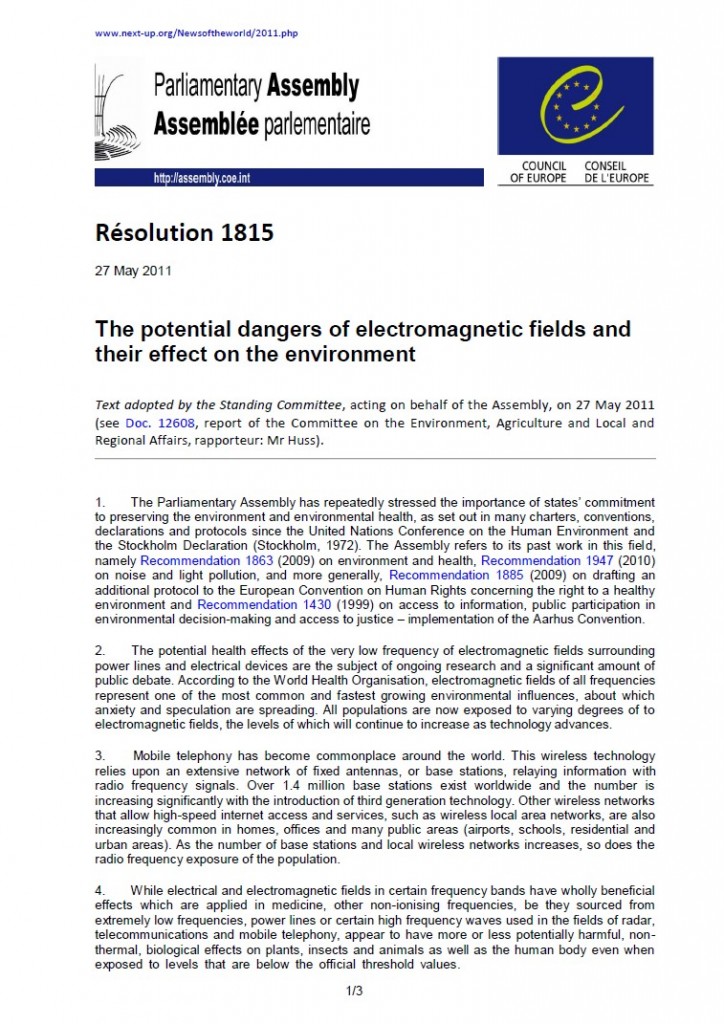Portada del sitio > Estudios Científicos > The effect of mobile phone electromagnetic fields on the alpha rhythm of (...)
The effect of mobile phone electromagnetic fields on the alpha rhythm of human electroencephalogram
Bioelectromagnetics
Viernes 7 de septiembre de 2007 · 1875 lecturas
The effect of mobile phone electromagnetic fields on the alpha rhythm of human electroencephalogram
R.J. Croft 1 2 *, D.L. Hamblin 1 2, J. Spong 1, A.W. Wood 2 3, R.J. McKenzie 2, C. Stough 1
1Brain Sciences Institute, Swinburne University of Technology, Melbourne, Australia
2Australian Centre for Radiofrequency Bioeffects Research, Melbourne, Australia
3Bioelectromagnetics Laboratory, Swinburne University of Technology, Melbourne, Australia
email: R.J. Croft (rcroft@swin.edu.au)
*Correspondence to R.J. Croft, Brain Sciences Institute, Faculty of Life and Social Sciences, Swinburne University of Technology, John St., Hawthorn VIC 3122, Australia.
Funded by:
National Health and Medical Research Council of Australia; Grant Number: 154905
Keywords
GSM900 • acute exposure • EEG • alpha power
Abstract
Mobile phones (MP) emit low-level electromagnetic fields that have been reported to affect neural function in humans; however, demonstrations of such effects have not been conclusive. The purpose of the present study was to test one of the strongest findings in the literature; that of increased alpha power in response to MP-type radiation. Healthy participants (N = 120) were tested using a double-blind counterbalanced crossover design, with each receiving a 30-min Active and a 30-min Sham Exposure 1 week apart, while electroencephalogram (EEG) data were recorded. Resting alpha power (8-12 Hz) was then derived as a function of time, for periods both during and following exposure. Non-parametric analyses were employed as data could not be normalized. Previous reports of an overall alpha power enhancement during the MP exposure were confirmed (relative to Sham), with this effect larger at ipsilateral than contralateral sites over posterior regions. No overall change to alpha power was observed following exposure cessation; however, there was less alpha power contralateral to the exposure source during this period (relative to ipsilateral). Employing a strong methodology, the current findings support previous research that has reported an effect of MP exposure on EEG alpha power. Bioelectromagnetics. � 2007 Wiley-Liss, Inc.
Ver el abstract original AQUÍ
Ver el artículo original completo en pdf







